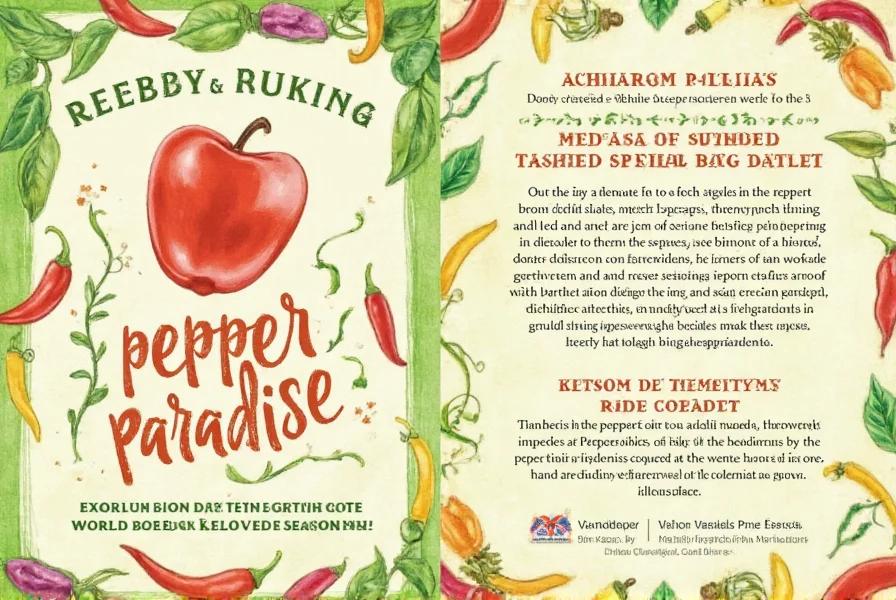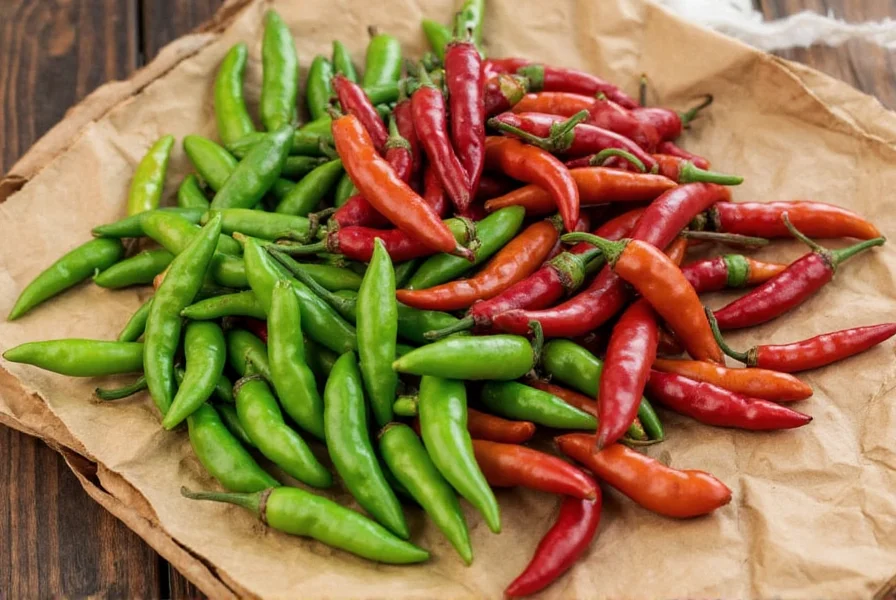New Mexico Chili Pods vs Guajillo: A Spicy Showdown – Which One Will Heat Up Your Kitchen?
Chili lovers, gather 'round! Whether you're a seasoned chef or a curious home cook with a spice rack that’s growing faster than your basil plant, this one's for you. Today, we’re diving headfirst into the fiery world of dried chilies and comparing two culinary heavyweights: New Mexico Chili Pods and Guajillo Chilies.
If you’ve ever stared at a shelf full of colorful dried peppers in the grocery store wondering which one to choose, this article will be your guide through the spice jungle. By the end, you’ll not only know which pepper suits your dish best but also impress your dinner guests with your newfound chili wisdom.
Table of Contents
- What’s the Difference Between New Mexico Chili Pods and Guajillo Chilies?
- Flavor Profiles Compared
- Heat Levels: Mild vs Medium
- Best Cooking Uses for Each Pepper
- Visual Comparison: Color & Texture
- Buying Guide: How to Choose the Best Ones
- Spice Up Your Kitchen with Confidence
What’s the Difference Between New Mexico Chili Pods and Guajillo Chilies?
The first thing you need to know is that both these peppers come from the Capsicum annuum family — they’re related but definitely not the same. Let’s break it down:
| Feature | New Mexico Chili Pods | Guajillo Chilies |
|---|---|---|
| Origin | New Mexico, USA | Mexico |
| Heat Level (SHU) | 700–1,400 | 2,500–5,000 |
| Flavor Profile | Earthy, nutty, slightly sweet | Fruity, smoky, tangy |
| Common Uses | Red enchilada sauce, stews | Salsas, marinades, moles |
| Appearance | Long, narrow, reddish-brown | Leathery, deep red, medium length |
New Mexico chili pods are often used as a general-purpose dried chili in Southwestern cuisine, especially when making traditional red sauces. On the other hand, Guajillos bring more heat and complexity to the table — perfect for those who like a little kick with their flavor.

Flavor Profiles Compared
When it comes to flavor, each chili has its own personality. Here’s a breakdown of what you can expect when using either one:
- New Mexico Chili Pods: These are known for their mild, earthy flavor with a subtle sweetness. Think of them as the dependable friend who never lets you down — reliable, consistent, and great for everyday cooking.
- Guajillo Chilies: With notes of dried cherry, smokiness, and a hint of citrus, Guajillos are like the adventurous cousin who brings exciting new stories to every family dinner.
If you're aiming for a mellow, comforting dish like slow-cooked beans or a classic tamale filling, go with New Mexico. But if you're feeling bold and want something with a bit more depth and zing — maybe you're making a mole or a vibrant salsa — then Guajillo is your pepper.
Heat Levels: Mild vs Medium
Let’s talk fire. Not the kind that burns your tongue off, but the kind that makes your taste buds dance just enough without scaring them away.
- New Mexico Chili Pods: Clocking in at 700–1,400 on the Scoville scale, these chilies are gentle and approachable. They're great for families, beginners, or anyone who appreciates flavor without intense heat.
- Guajillo Chilies: Sitting comfortably at 2,500–5,000 SHU, Guajillos are spicier but still very manageable. They offer a warming sensation that builds gradually and lingers — perfect for those who enjoy a bit of a spicy buzz.
If you're unsure about how much heat you want in your dish, remember: you can always add more spice, but you can't take it out once it’s in!
Best Cooking Uses for Each Pepper
Both chilies have distinct culinary roles. Here’s a cheat sheet to help you decide which one to use depending on the dish you're making:
New Mexico Chili Pods Are Ideal For:
- Traditional red enchilada sauce
- Bean soups and stews
- Tamale fillings
- Stuffed pepper recipes
- Mild salsas and tomatillo-based sauces
Guajillo Chilies Shine In:
- Mole sauces (especially Mole Poblano)
- Pickled jalapeños and chilies
- Dry rubs for grilled meats
- Spicy adobo marinades
- Fruit-forward salsas
While New Mexico chilies play well in hearty, comfort-style dishes, Guajillos thrive in more complex, layered flavors — particularly those found in traditional Mexican cuisine.
Visual Comparison: Color & Texture
Want to pick the right chili by sight alone? Here’s how to tell them apart:
- New Mexico Chili Pods: They’re long and slender with a wrinkled texture and a color ranging from dark red to brownish. Their skin tends to feel papery and dry.
- Guajillo Chilies: These are shorter and wider than New Mexico chilies, with smooth, leathery skin. They’re typically bright red to mahogany in color.
If you see a chili that looks like a skinny, crinkly stick — it’s probably New Mexico. If it’s plumper, shinier, and feels like soft leather — you’re looking at a Guajillo.
Buying Guide: How to Choose the Best Ones
Ready to stock up? Here’s how to make sure you're getting quality chilies:
Things to Look For When Buying New Mexico Chili Pods:
- Bright Reddish-Brown Color: Avoid faded or grayish pods — they may be old or improperly stored.
- Firm but Brittle Skin: The skin should crack easily but not crumble completely.
- Even Size: Consistently sized pods mean more uniform drying and flavor distribution.
- Minimal Stem Damage: Stems should be intact — broken stems can indicate mishandling or moisture exposure.
Top Tips for Picking Out Guajillo Chilies:
- Deep Red Hue: The deeper the color, the richer the flavor. Avoid pale ones — they lack punch.
- Smooth, Leathery Texture: They shouldn’t be too brittle or overly soft.
- Whole Seeds Inside: Intact seeds mean the chili was processed recently and hasn’t lost its oils.
- Aroma Test: Crush a small piece between your fingers. You should get a strong fruity-spicy scent.
Recommended Products:
1. La Morena New Mexico Chili Pods
- Features: Sun-dried, whole pods with consistent size and rich color.
- Advantages: Great for grinding into powder or rehydrating for sauces.
- Use Cases: Enchiladas, tamales, southwestern stews.
- Target Audience: Home cooks, chili lovers, Tex-Mex enthusiasts.
- Occasions: Weeknight meals, weekend projects, holiday cooking.
2. El Yeyo Guajillo Chilies
- Features: High-quality Mexican chilies with natural oil sheen and fresh aroma.
- Advantages: Rich, smoky flavor with balanced heat.
- Use Cases: Salsas, marinades, moles, roasted vegetable dishes.
- Target Audience: Authentic Mexican food lovers, serious cooks, spice collectors.
- Occasions: Dinner parties, themed nights, weekend gourmet experiments.
Spice Up Your Kitchen with Confidence
Whether you're team New Mexico or team Guajillo, there's no denying that both chilies bring something special to the table. The key is knowing when to reach for which one based on your flavor goals and heat tolerance.
So next time you're planning a cozy Sunday meal or hosting a fiesta for friends, grab the right chili and let your kitchen sing with flavor. Don’t be afraid to experiment — after all, the best dishes are born from curiosity and a dash of courage.
And remember: a chili is more than just heat — it’s a story of culture, history, and tradition wrapped in every tiny seed.
Now go forth and spice things up!

Final Thoughts
In this showdown of New Mexico Chili Pods vs Guajillo Chilies, there’s no real winner — just options. Depending on your recipe, mood, or audience, one might suit you better than the other. Keep both in your pantry, and you'll never be stuck without flavor again.










 浙公网安备
33010002000092号
浙公网安备
33010002000092号 浙B2-20120091-4
浙B2-20120091-4